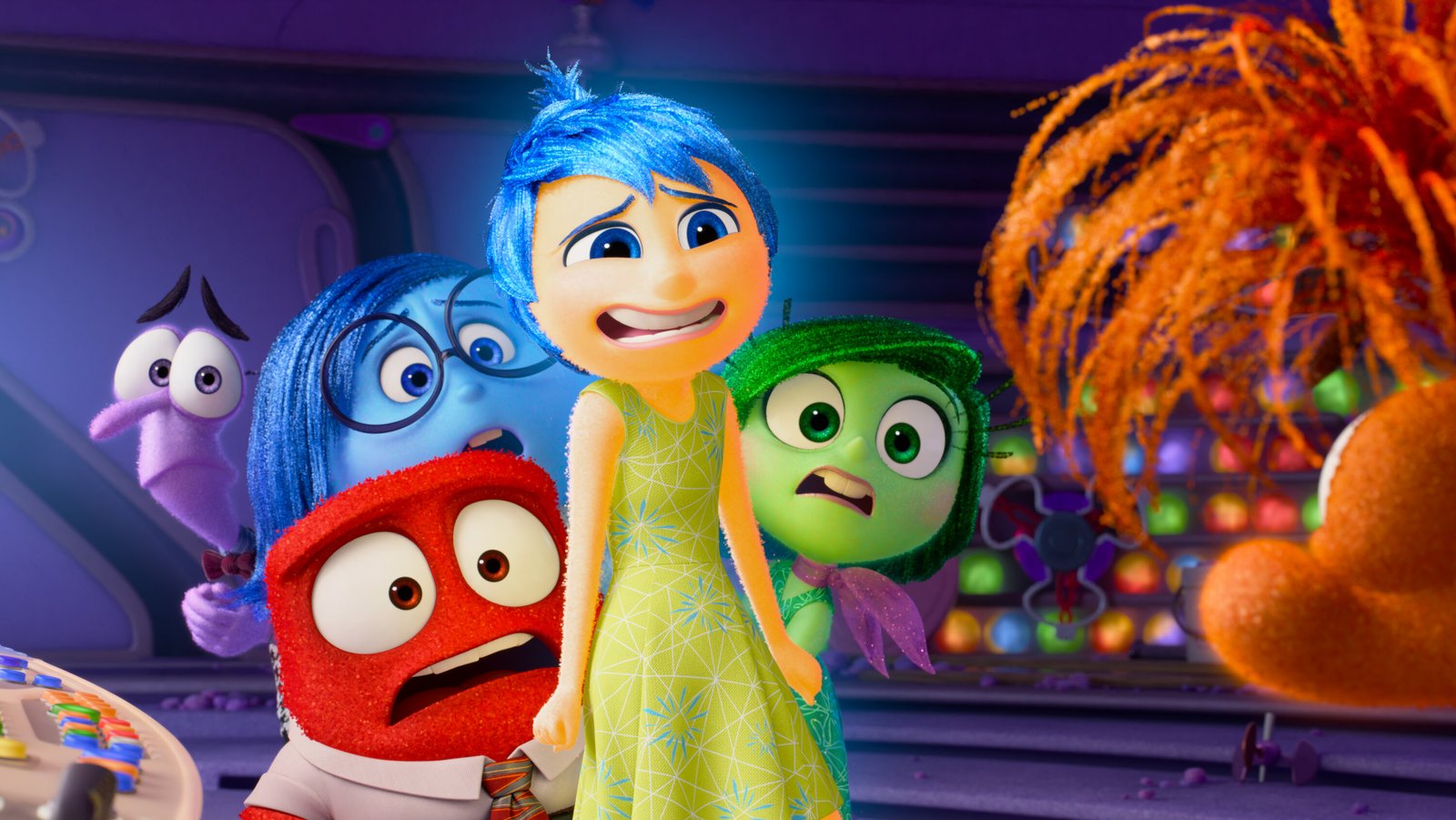Movie Reviews
‘Motel Destino’ Review: Karim Aïnouz’s Tropical Noir Conjures a Potent Atmosphere of Heat, Desire and Danger Even if the Payoff Loses Steam

Two young men fight playfully on a beach surrounded by rocky hills in the opening moments of Karim Aïnouz’s Motel Destino, their tanned bodies glistening under the scorching sun of Brazil’s northeastern coast. Before it’s revealed that the pair are brothers close in age, the scene sets up a torrid queer undercurrent that ripples throughout this erotic thriller even though the three principal characters enmeshed in a dark romantic triangle are all ostensibly straight.
Returning to his home country after last year’s English historical drama Firebrand, Aïnouz takes inspiration from classic noir, notably The Postman Always Rings Twice and Double Indemnity. That sets up expectations for a denouement involving some kind of twist or retribution, which the movie only sort of provides, segueing from violence to a kind of dreamy deliverance. If that ending makes it less satisfying than the sustained tension and intrigue that precede it, there’s still plenty to keep you glued.
Motel Destino
The Bottom Line A visual knockout that doesn’t quite stick the landing.
Venue: Cannes Film Festival (Competition)
Cast: Iago Xavier, Nataly Rocha, Fabio Assunção, Fabíola Líper, Renan Capivara, Yuri Yamamoto, David Santos, Isabela Catão, Jupyra Carvalho, Bertrand de Courville
Director: Karim Aïnouz
Screenwriter: Wislan Esmeraldo, in collaboration with Karim Aïnouz, Mauricio Zacharias
1 hour 55 minutes
At the top of that list are the intoxicating visuals of Hélène Louvart, giving the film palpable heat, physicality and danger that recall the rising-star French cinematographer’s work on Eliza Hittman’s Beach Rats. The striking compositions shot on 16mm have grainy textures pulsing with vitality and electrified by bold splashes of saturated color. The look is like neon even in daylight, adding considerably to the movie’s erotic charge.
The aforementioned beach boys are 21-year-old Heraldo (Iago Xavier) and his slightly older brother Jorge (Renan Capivara), who’s about to have his first child. Heraldo is eager to leave their small beach town in Ceará, move to the city and find work as a mechanic, eventually aiming to run his own garage. But the brothers are on the payroll of local loan shark and drug dealer Bambina (Fabíola Líper), who refuses to let Heraldo go before they do an important two-man job.
That evening at a beach bar, Heraldo hooks up with a stranger (Isabela Catão) and takes her to Motel Destino for a wild night. But once he passes out, she makes off with his money, leaving him locked in the room with no way to pay. Dayana (Nataly Rocha), who runs the seedy roadside joint with her older husband Elias (Fabio Assunção), eventually releases him. But Heraldo makes it to town just in time to see Jorge’s dead body being carted off after his botched attempt to carry out the Bambina job solo.
Aïnouz and screenwriter Wislan Esmeraldo keep the set-up tight, dispensing with unnecessary exposition. The tragedy also serves to fuel Heraldo’s dreams of Jorge, adding the weight of guilt, while fear factors in via his terror of Bambina’s semiautomatic-toting goon Rafael (David Santos) coming after him. Heraldo gets lucky with a hideout when he returns to Motel Destino and Dayana takes him on as a handyman, putting his electrician skills to work.
Production designer Marcos Pedroso renders the sex hotel as a place so sordid you can practically smell it — and that’s even before you see the donkeys humping in the yard. (Nothing like the sight of a whopping mule penis to hammer home a movie’s fascination with lust.) The rooms are bathed in a lurid red glow, as is the central corridor from which staff secure payment through window hatches that allow for the occasional bit of voyeurism. Security cameras also play into that element, uncovering secrets later on.
Perhaps even more pungently descriptive than the look of the place is sound designer Waldir Xavier’s aural racket of moaning and grunting coming from the rooms, sometimes with the added accompaniment of porn channels. Aïnouz doesn’t hold back in his depiction of an environment in which sex and desire are as dirty, sweaty, whiffy and animalistic as it gets. Heraldo even has to remove a large snake that gets into a room, and it’s not one of the sex toys provided by management.
Naturally, Heraldo and Dayana soon start having clandestine trysts while boorish hothead Elias is elsewhere. He’s busy with plans to build an extension and add more rooms, but it doesn’t take him much time to figure out what’s going on. Elias has already threatened to kill Dayana when she tried to run off in the past, so there’s no telling what he’ll do once he discovers he’s being cheated on.
Aïnouz teases out the possible scenarios, stirring in homoerotic tension when Elias starts getting drunk and handsy around Heraldo. It’s clear the older man is no stranger to crime, even before we witness his method of dealing with a motel guest’s inconvenient heart attack. The identity of that guest and his link back to an earlier event is one of the screenplay’s more schematic touches.
Even so, the movie’s overripe sensuality pairs well with the menace of isolated settings like a wind farm on a lonely stretch of beach at night. Likewise the simmering threat of violence or sexual abuse.
But the climactic action is somewhat wayward, with a too easy solution supplied by an unfortunate animal in the wrong place at the wrong time. Dayana talks about being treated like an animal by Elias, and with the donkeys and goat and chickens always around in the motel yard, that metaphor feels heavy-handed. The script’s other failing is its wishy-washy wrap-up of the Bambina business.
Despite its flaws, Motel Destino has mood, rawness and atmosphere to burn, fueled by Amine Bouhafa’s score, which becomes steadily more disquieting as it ratchets up the urgency.
Strong performances by the three leads motor along on the characters’ nervous energy, apprehension or anger, and screen newcomer Xavier keeps you invested in Heraldo’s ordeal. Aïnouz employs the central character as a stand-in for Brazilian youth, whose drive and desire are held back by a corrupt older generation intent on maintaining its power. It’s that kind of oppression that forces young men like Heraldo to bend their fates.

Movie Reviews
“Inside Out 2” is Good, but is that Good Enough? (Movie Review)

When it was released in 2015, Pete Docter’s “Inside Out” was a seminal moment for Pixar. Coming on the heels of a pair of films that didn’t connect with audiences or critics in the same way that much of the studio’s earlier work had (2012’s “Brave” and 2013’s “Monsters University”), “Inside Out” saw Pixar out to prove they still had it. And as it turned out, they absolutely did.
After some decidedly unflattering discourse discussing the studio’s new penchant for favoring sequels and prequels over original material, “Inside Out” was an original film that hit every possible benchmark for success: it became one of the best-reviewed films Pixar had ever made, grossed just shy of a billion dollars, and won an Oscar. “Inside Out” is a truly stunning film, one that builds upon a bedrock of remarkably nuanced emotional intelligence to deliver an animated feature just as engaging philosophically as it is as a piece of entertainment.
Now, in 2024, Pixar is in a very different position. Despite the fact that the overwhelming majority of Pixar’s recent output has been incredibly well-received original films, these films have not been released in theaters. This is partially due to COVID-related lockdowns and partially due to Disney’s insistence on betting every chip possible on their streaming service, Disney+. As a result, films like “Soul,” “Luca,” and “Turning Red” (all of which are absolutely wonderful and unique works that deserve to be acknowledged as modern classics within the Pixar oeuvre) were not released in theaters and in their place, the aggressively lackluster films “Lightyear” and “Elemental” were. Thus, Pixar has been pushed back into a very similar corner, one in which their artistic and commercial viability has been questioned from every side, including parent-company Disney most of all.
So Kelsey Mann’s “Inside Out 2” finds itself being released to a scrutinizing media environment, trying to hit every possible quadrant for success once more, just like its predecessor. But does “Inside Out 2” have what it takes to live up to the critical, commercial, and cultural juggernaut that was the first film?
5. Weak Spot: Commodity Over Character
One of the first things to strike this writer as strange in the lead-up to “Inside Out 2” was the lack of returning creatives, both in front of and behind the digital camera. While Amy Poehler is back, as are several others, there are numerous highly notable absences that one does not typically see in Pixar sequels. Neither Bill Hader nor Mindy Kaling have returned to their roles of Fear or Disgust, respectively, and even composer Michael Giacchino, whose score for the first film has become so indelibly ingrained in the minds and memories of audiences, is woefully missing here.
This is all strange, given the lengths Pixar has gone to actively preserve these kinds of creative teams in the past. All four Toy Story films have kept the core voice cast involved as much as possible, and you don’t see Randy Newman not returning to score one of those sequels. In and of itself, this observation is not a problem, but it’s indicative of a larger systemic issue. “Inside Out” was a film about characters, and “Inside Out 2” flattens those characters into commodities in practically every way.
Part of this has to do with the sheer number of characters in “Inside Out 2.” By introducing four new Emotions to the cast, “Inside Out 2” is a far more crowded film, one that feels ultimately unable to devote worthwhile time to properly defining or developing its characters.
As an easy example, in “Inside Out,” Bill Hader as Fear felt like a real character. We spent meaningful time with him, both with the rest of the Emotions and in solidarity, and came to understand his role within Riley’s emotional state on many levels. In “Inside Out 2,” Fear is a caricature of Hader’s original performance. New voice actor Tony Hale does a great job, but the character himself is defined by the broadest strokes imaginable here, and it’s to the overall detriment of the character and the film. In juggling so many more characters and moving pieces, “Inside Out 2” loses the stark clarity, focus, and impact of the first film and muddies the central metaphor at the series’ core.
4. Maya Hawke as Anxiety
The one new emotion who truly shines in “Inside Out 2” is Anxiety, voiced delightfully by Maya Hawke.
Without delving too deeply into specifics to preserve some of the film’s later surprises, Anxiety’s role in the story stands out as a highlight where the emotional intelligence of “Inside Out 2” matches that of the first film. The portrayal of Anxiety manages to convey with genuine subtlety and nuance the ways in which anxiety can impact someone, especially during adolescence.
Maya Hawke’s vocal performance is exceptional, effectively capturing the complexities of Anxiety’s motivations. Supported by the strong writing of the character in Meg LeFauve & Dave Holstein’s script and stunning animation, Anxiety emerges as one of the most skillfully crafted and impactful elements of “Inside Out 2.”
3. Weak Spot: Maintaining the Status Quo
There are several instances throughout the runtime of “Inside Out 2” where it feels like the filmmakers are yearning to break free from the confines of delivering ‘another Inside Out’ and instead offer something beyond that preconceived notion. Throughout the film, concepts such as Riley driving herself without the influence of any Emotions, delving into the emotions that constitute the Emotions themselves, and exploring how one’s primary emotions evolve over time are all hinted at. However, disappointingly, none of these ideas are explored with any real depth.
Instead, “Inside Out 2” appears determined to cling to the status quo established by its predecessor, often to its own detriment. While these ideas suggest potential avenues for a transformative story involving Riley and her emotions, the film fails to fully realize any of them. Instead, the overarching theme of the film feels like a slight variation on the deeper theme of the first film. Similarly, the narrative of “Inside Out 2” feels deliberately reminiscent of its predecessor, lacking the imagination in staging, settings, or character development that made the original so memorable.
2. Weak Spot: A Lack of Imagination
The first “Inside Out” feels bursting with creativity, imagination, and monumental stakes. While the external story is simply about Riley and her family moving to a new city and her contemplating running away from home, the narrative feels almost mythic due to the meticulous interweaving of a propulsive narrative and profound themes by Docter and his team.
In contrast, “Inside Out 2” often feels oddly insular and small-scale in the wrong ways. While using a weekend away at hockey camp as the narrative’s core is not a bad idea, as it serves as a microcosm of Riley’s impending adolescence, the film fails to emotionally convey the magnitude of this event as effectively as it does intellectually.
This is exacerbated by an in-brain adventure for the Emotions that feels more like a straightforward task than the grand odyssey of the first film. While the first film also revolved around retrieving a MacGuffin, it did so to facilitate character growth and thematic exploration. In “Inside Out 2,” this narrative structure remains, but the essential components feel far more scarce and less impactful.
1. The Vault
The true standout scene of “Inside Out 2” revolves around a vault within Riley’s head dedicated to safeguarding her secrets. Within this vault lies a plethora of hilariously clever gags, including a recurring one that parents of very young children will undoubtedly find immensely enjoyable. What sets this sequence apart is its utilization of a mixed-media style of animation, which deviates from Pixar’s typical aesthetic in unexpected ways, enhancing the scene’s impact. There’s a genuine exuberance and innovative energy to this moment, which the film could have benefited from incorporating more extensively.
(B-)
“Inside Out 2” is a very well-made film. It’s funny, charming, and compelling, but it doesn’t quite reach the same level of humor, charm, and emotional resonance as the first “Inside Out” film. While it represents an improvement over Pixar’s previous theatrical releases, “Lightyear” and “Elemental,” it falls short of the artistic fulfillment and singular vision found in recent works like “Soul” by Pete Docter and Kemp Powers, “Luca” by Enrico Casarosa, and “Turning Red” by Domee Shi.
Although “Inside Out 2” isn’t a disaster, it feels like a movie that prioritizes mass appeal and accessibility over passionate storytelling and creative vision at every turn.
Movie Reviews
'Inside Out 2' movie review: Featuring the feels, their feats and then some

Nearly 10 years after the first instalment, out of the classic Pixar-Disney partnership, comes a peek into the life of a teenage Riley in the sequel to Inside Out. Much like its predecessor, the movie is intense, uplifting and, understandably, emotional.
The introduction of new characters — emotions and beyond — succeeds in keeping the audience guessing. True to form, the script and animation hold several inside jokes and lean heavily on wordplay. Amidst the dry, chuckle-drawing humour, the writers have also managed to pepper in more complex concepts. This imagery is likely to stick with you after the viewing, drawing reflections from the outside in, ironically.
Even in the innovation and progressing timeline, there is definitely a sense of familiarity. Characters navigate the mind landscape, and make an arduous journey with obstacle after obstacle, which sometimes does seem to drag on.
The voice cast powers this delicate script forward with noticeable nuance, despite some replacements and additions. Amy Poehler continues to be a convincing (and this time, a more likeable) Joy, while Maya Hawke’s Anxiety carries a nervous and excited energy central to the story.
The actors also manage to keep pace with the development of their characters into more multi-dimensional personalities. For those who enjoyed, related to and fondly remember the characters from the first film, the second offers great story arcs to love, alongside new fun introductions.
While Pixar’s bright, lively animation will work great to keep younger audiences entertained, depictions of mental health — particularly a panic attack — might warrant a conversation, context and maybe some reassurance for kids and teens. For older audiences, the movie can come off like one long session of therapy — loads of self-reflection, uncertainty, tears, awareness and hopefully, acceptance.
The story peels back the layers of the confusion, hopefulness and embarrassment of the teen years in a way that feels uncomfortable at times, and profound at others.
In all, Inside Out 2, holds tears, laughs and a slew of, “Oh, I see what you did there”. While it isn’t the most gripping watch throughout, it is thoughtful and sweet, making the film a lovely choice for a quiet day with family or friends. My top tip is to make sure you stick around for the post-credits scene (there’s more than one)!
Published 15 June 2024, 09:56 IST
Movie Reviews
Music Shop Murthy Review: Sincere But Overdone

BOTTOM LINE
Sincere But Overdone
RATING
2.25/5
CENSOR
U/A, 2h 7m
 What Is the Film About?
What Is the Film About?
Murthy (Ajay Ghosh) is a music shop owner in Vinukonda with a wife and two grown-up kids. The shop is a burden on the family as it yields no financial gains. However, Murthy is passionate about music and doesn’t let it go despite daily taunts from wife.
Murthy meets a young girl, Anjana and they immediately form a bond over their mutual liking for music. She inspired Murthy to become a DJ by following his passion. The movie’s story is about whether Murthy achieved the goal or not.
Performances
Music Shop Murthy is Ajay Ghosh’s one-man show. His journey is the movie and he does a neat job with it. The fact that the character is closer to the actor’s age helps to a large degree.
Ajay Ghosh goes about the proceedings in his usual way. However, at times he feels overdoing the goody-good act a bit. It makes the narrative needlessly syrupy, at times, as a result. He delivers in the emotional scenes and manages to pass off as being an old-age DJ without entirely looking ridiculous. Needless to say, as an actor, it is a memorable role for him as he gets a full-fledged lead part.
Chandini Chowdary plays a youngster who lives on her terms. The accent and body language feel too urban for the backdrop (Vinukonda), leaving that aside she is confident and plays a key role in delivering the message.
For Amani, this is a walk in the park. She has done similar roles in the past and does it again with the same conviction and emotion without losing a beat. Despite nothing unusual, she still stands out for the same reason.
 Analysis
Analysis
Siva Paladugu writes and directs Music Shop Murthy. It is a feel-good underdog story where the protagonist rises and shines against all the odds. The difference here from other such genre films is the lead who is an aged guy.
Right from the opening we know where Music Shop Murthy is headed. The world establishment makes it clear and so does the narrative as it unfolds. And still, we don’t mind it or lose interest, and that’s because of the earnestness with which the proceedings happen.
There is sincerity in Murthy, and although overdone, it works eventually. Similarly, the scenarios and the drama he is entangled in feel relatable. But, more than anything it is the age factor added to the story that makes one root for the character.
Age should not make one lose interest in what they are passionate about – this theme and the situations centred on the DJ aspect help Music Shop Murthy escape being completely outdated.
The moments between Murthy and Anjana (played by Chandini Chowdhary) bring a little bit of freshness to the proceedings. The escalation of drama in the pre-interval and interval as a consequence makes it a decent half overall.
The problem for Music Shop Murthy lies in the second half. Even within a predictable tale, the fresh element seen in the first half is missing here as the narrative ticks all the genre-related clichés.
The feel-good factor turns into a fantasy of sorts, the way things happen to our good-at-heart guy. The struggle doesn’t register and neither does the victory. Things just go through the motions as they must conclude.
It is again at the pre-climax and climax portions when the final drama occurs, there is some emotional connection. The sentiments, however predictable and cliché, and contrived at places, still work and leave us with a sense of fulfilment. The end goal is achieved.
Overall, Music Shop Murthy is a routine, but passable underdog story – the kind which is a harmless watch. The neat message and relatability are an additional bonus. Watch it if you like feel-good dramas even if they follow an utterly clichéd path.
 Performances by Others Actors
Performances by Others Actors
Music Shop Murthy has a limited but decent casting of recognisable faces. Unfortunately, none barring Dayanandh Reddy have any worthwhile part. Dayanandh, for a change, gets a positive part which comes as a mild surprise as he is used to playing the opposite in such setups. Senior actor Bhanu Chander feels wasted playing an utterly one-dimensional part. The same is the case with Amit Sharma.
 Music and Other Departments?
Music and Other Departments?
Pavan’s music is lacklustre for a film that is supposed to have music at its heart. The DJ bits are fine, but the regular songs are not up to the mark. The cinematography is below par if one looks at it from the big screen perspective. The editing is alright and so is the writing that works despite the utter routine content it dwells in.
Highlights?
Ajay Ghosh
Message
Few Dialogues (Even Though Predictable)
Drawbacks?
Routineness
Feels Rushed
Contrived Emotions At Places
Lack Of Memorable Music
Did I Enjoy It?
Yes, Few Parts
Will You Recommend It?
Yes, But With Reservations and to those who like underdog winning stories.
Music Shop Murthy Movie Review by M9

-

 Movie Reviews1 week ago
Movie Reviews1 week agoStream It Or Skip It: ‘Under Paris’ on Netflix, a shark-in-the-Seine thriller that delivers the ludicrousness you crave
-

 News1 week ago
News1 week agoWoman handcuffed in police car hit by freight train reaches $8.5M settlement
-

 News1 week ago
News1 week agoIsrael used a U.S.-made bomb in a deadly U.N. school strike in Gaza
-

 World1 week ago
World1 week agoEconomy, migration: Voters' main concerns ahead of elections
-

 Politics1 week ago
Politics1 week agoTrump campaign accelerates vetting of potential running mates
-

 Movie Reviews1 week ago
Movie Reviews1 week agoShort Film Review: Blue and White (2022) by Hiroyuki Nishiyama
-

 World1 week ago
World1 week agoWorld leaders, veterans mark D-Day’s 80th anniversary in France
-

 World1 week ago
World1 week agoFrance to provide Ukraine with its Mirage combat aircraft




















